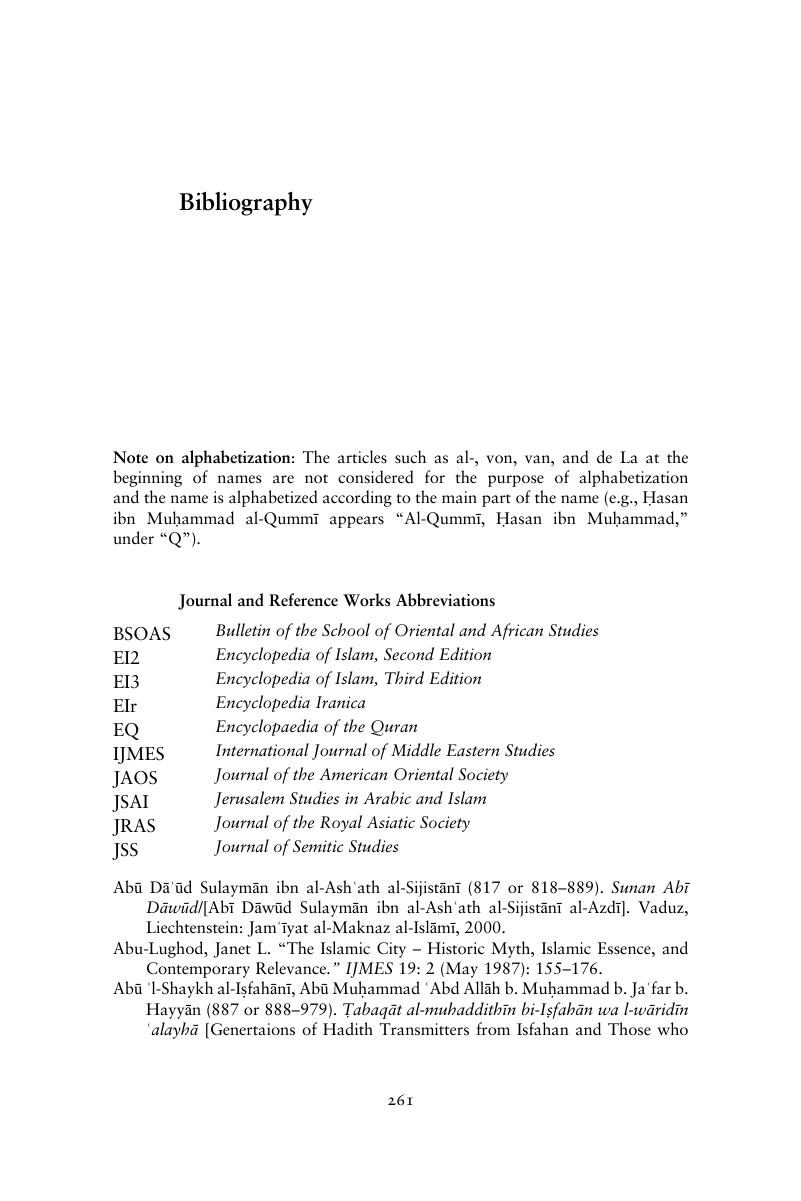Published online by Cambridge University Press: 05 August 2016

Note on alphabetization: The articles such as al-, von, van, and de La at the beginning of names are not considered for the purpose of alphabetization and the name is alphabetized according to the main part of the name (e.g., Ḥasan ibn Muḥammad al-Qummī appears “Al-Qummī, Ḥasan ibn Muḥammad,” under “Q”).
Bulletin of the School of Oriental and African Studies
Encyclopedia of Islam, Second Edition
Encyclopedia of Islam, Third Edition
Encyclopedia Iranica
Encyclopaedia of the Quran
International Journal of Middle Eastern Studies
Journal of the American Oriental Society
Jerusalem Studies in Arabic and Islam
Journal of the Royal Asiatic Society
Journal of Semitic Studies
To save this book to your Kindle, first ensure [email protected] is added to your Approved Personal Document E-mail List under your Personal Document Settings on the Manage Your Content and Devices page of your Amazon account. Then enter the ‘name’ part of your Kindle email address below. Find out more about saving to your Kindle.
Note you can select to save to either the @free.kindle.com or @kindle.com variations. ‘@free.kindle.com’ emails are free but can only be saved to your device when it is connected to wi-fi. ‘@kindle.com’ emails can be delivered even when you are not connected to wi-fi, but note that service fees apply.
Find out more about the Kindle Personal Document Service.
To save content items to your account, please confirm that you agree to abide by our usage policies. If this is the first time you use this feature, you will be asked to authorise Cambridge Core to connect with your account. Find out more about saving content to Dropbox.
To save content items to your account, please confirm that you agree to abide by our usage policies. If this is the first time you use this feature, you will be asked to authorise Cambridge Core to connect with your account. Find out more about saving content to Google Drive.